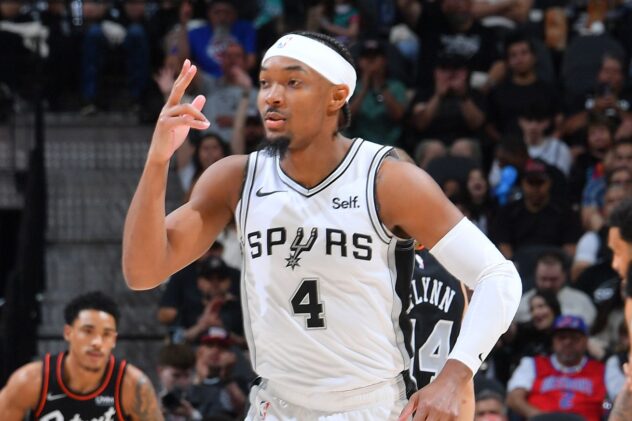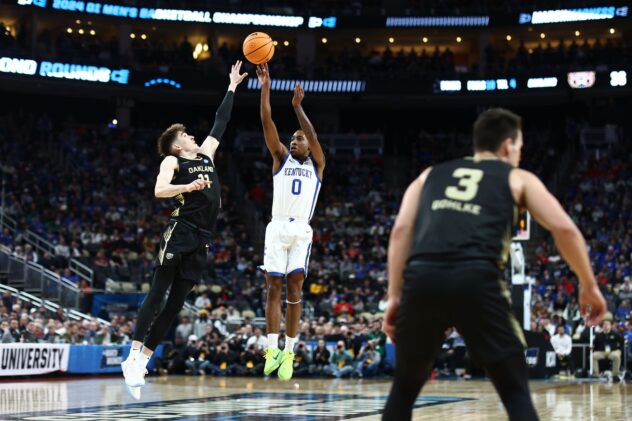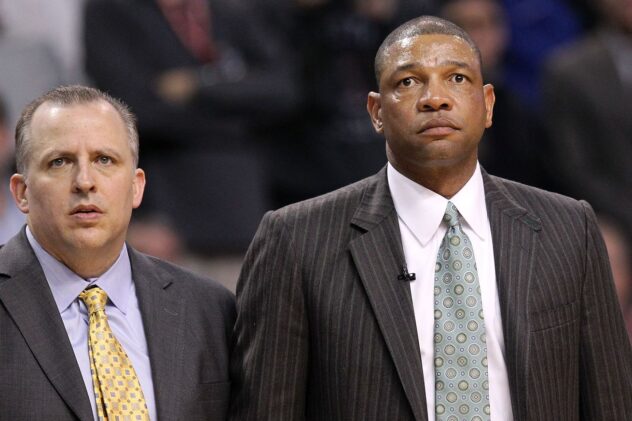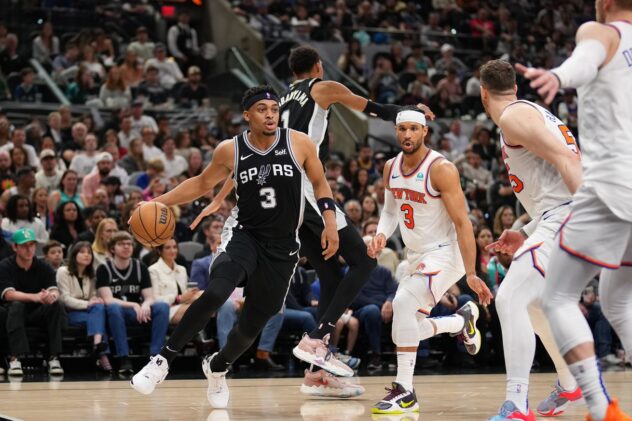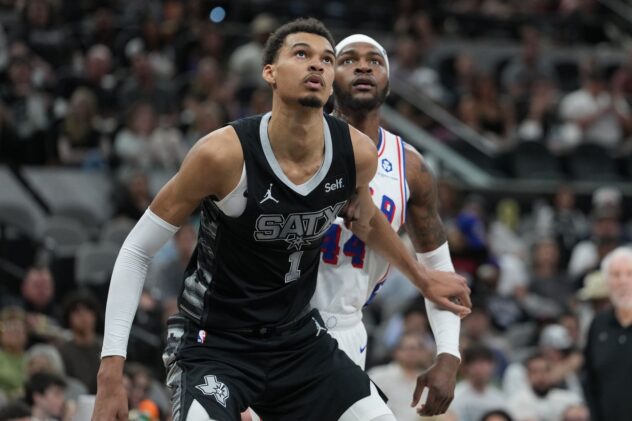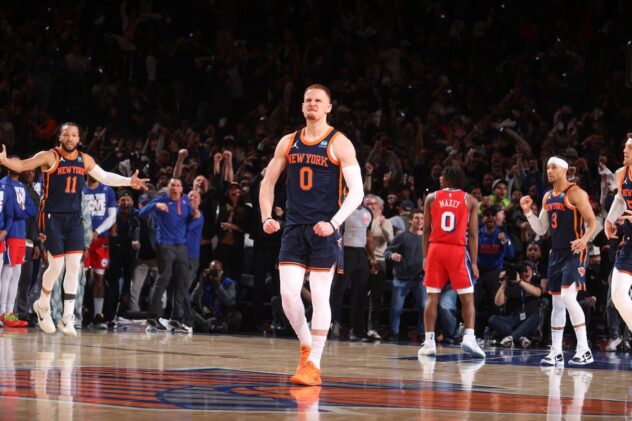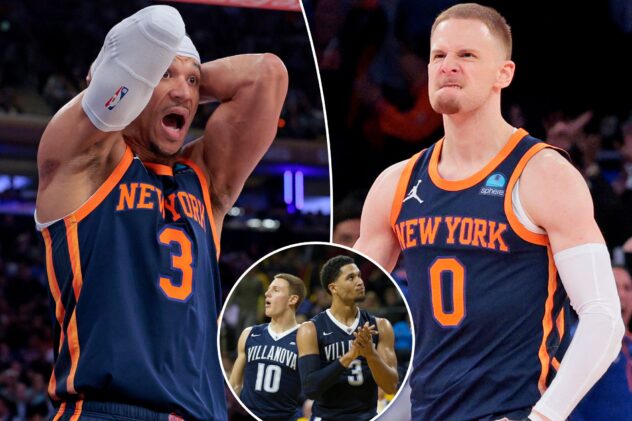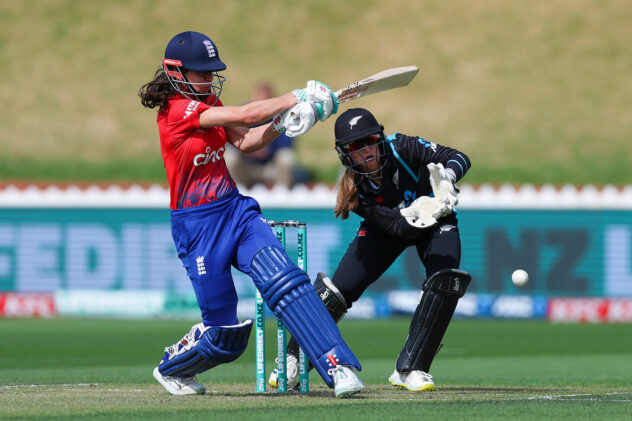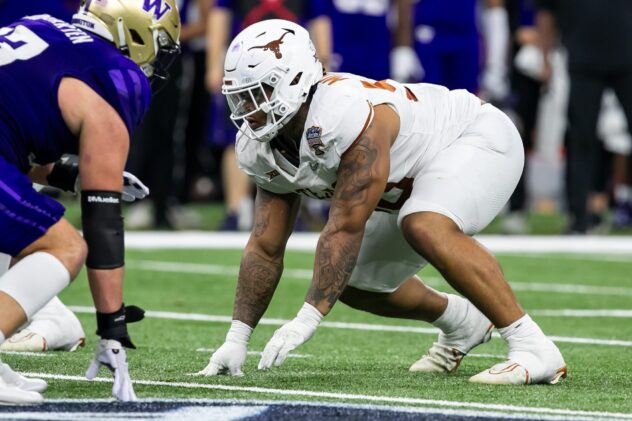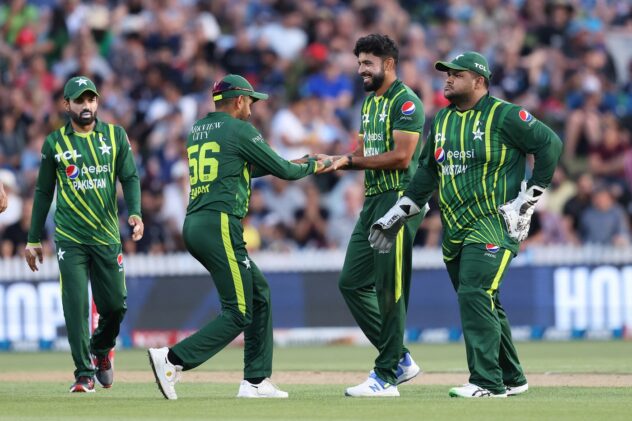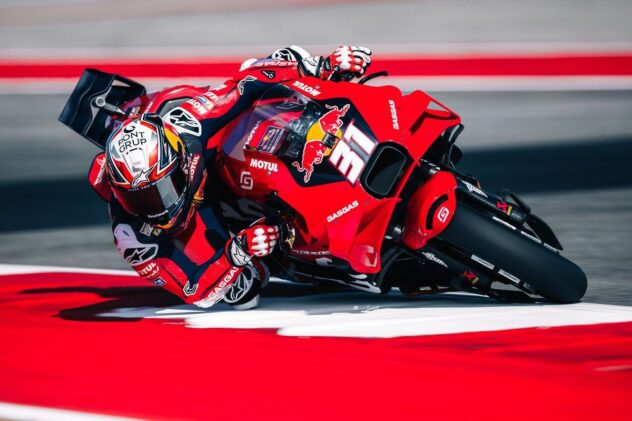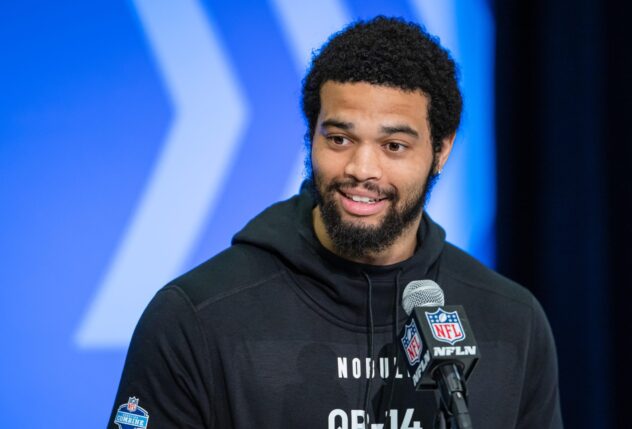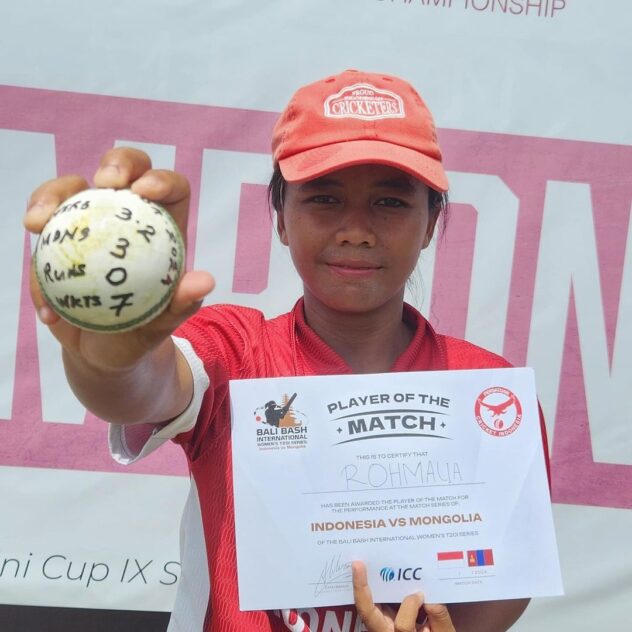NBA Draft 2017: Spurs Draft Philosophy
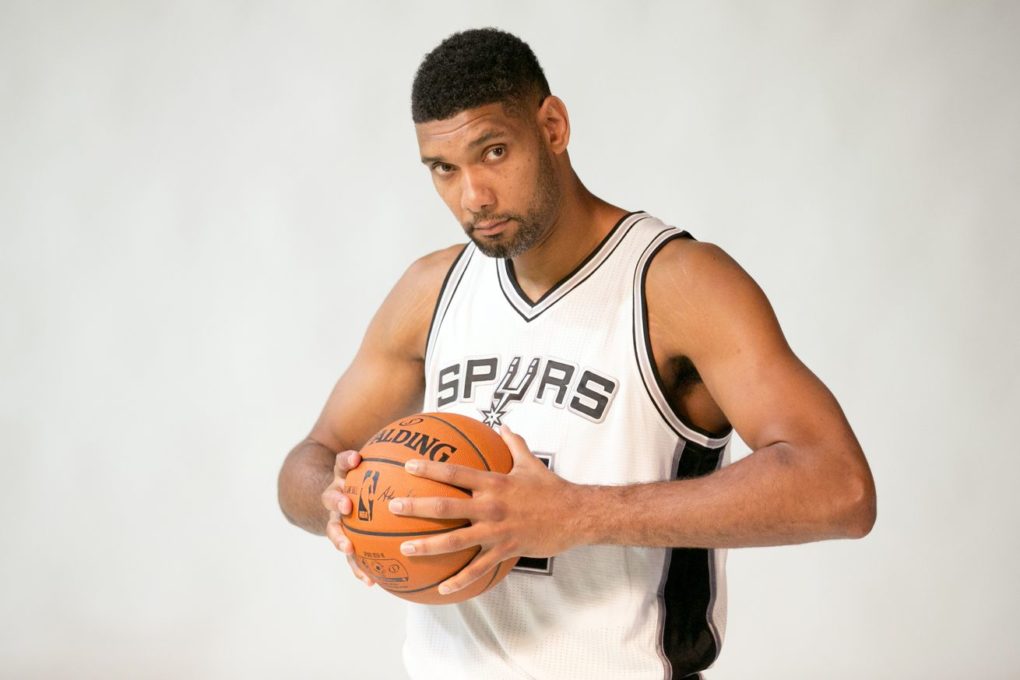
How does San Antonio approach the NBA draft? And why are so many of their picks European, and say over seas after being selected?
With the conclusion of the season, and after yesterday’s Spurs roster analysis, I wanted to take a look at the San Antonio Spurs’ philosophy toward the NBA Draft. Because R.C. Buford and Greg Popovich keep their thoughts largely to themselves and inside their organization, Spurs fans and the rest of the NBA can only make educated guesses at best, but that doesn’t mean we can’t learn a lot by carefully examining they way they’ve operated in the past and built the team through the years.
Talent versus Position
There is an age-old drafting argument in the league: should a team take the best talent available when their pick comes up, or should they draft to fill a position where they’re weak. No example better highlights these issues than the 1984 NBA Draft. In 1984, Hakeem Olajuwon was drafted #1 by the Houston Rockets. The Portland Trailblazers, drafting second, elected to take Sam Bowie from Kentucky over Michael Jordan from North Carolina, because their leading scorer was a SG named Jim Paxson, and they already had a talented rookie SG by the name of Clyde Drexler. And so Portland drafted Sam Bowie, and Michael Jordan went on to win 6 NBA Titles for the Chicago Bulls. Ever since, the media has always focused on talent over position.
However, there are some important assumptions that are built into this mantra that do not apply to the Spurs. First, the media tends to focus on the lottery players, with particular emphasis on the high lottery of picks 1-5. Teams drafting in those positions in the modern era tend to have extremely poor records the previous season (the 2017 Celtics being an exception), and are usually low on talent at every position. Thus, mottoes like “Talent over Position” are treated as a Golden Rule. In the last 20 years, the Spurs have not been drafting in the lottery. In fact, the Spurs most frequently draft between 25-30 in the first round, where the talent landscape is entirely different.
Rules of Thumb
One school of thought for talent evaluation is to cluster players into tiers. Tier 1 is for potential super-stars. This year, Lonzo Ball and Markelle Fultz are in this grouping according to Chad Ford at ESPN. Tier 2 is for players with All-Star potential, Tier 3 is for NBA Starters, Tier 4 is for Starters/High level rotation players, Tier 5 is composed of Rotation players, and Tier 6 is for potential first rounders. This year is considered a strong draft class, with 2, 8, 5, 4, 10 and 12 players in each of the respective tiers in order. If every team selects a player from the best available tier, this means that the best the Spurs are likely to be able to draft at 29 would be a rotation player.
Another rough rule of thumb is that for an “average” draft class, there is 1 NBA All-Star, 2-3 stars, 8-10 starters, 5- high level rotation players with the rest being fringe NBA players at best. So starting around the 20th pick, there is little difference between that point and the end of the draft. At best, a team is usually expecting a rotation player, and so need and playing position considerations usually dominate. Of course, there are always the exceptions that prove these rough, crude rules have limits.
Preparation
What do these guides mean for San Antonio which normally drafts at the end of the first round? First, they cannot assume competence of all of the GM’s and scouting personnel for all of the teams ahead of them in the draft. There are going to be unintentional gaffes, but then there will also be some teams that may take a chance on a high risk, high reward player prior to the Spurs draft position.
This means that the Spurs have to put an incredible amount of effort into preparing for the draft, not only for players likely to be available at their draft position, but for all players likely to drafted prior to the Spurs. Popovich might want to trade up to get a player to change the course of the organization (Kawhi Leonard). Draft preparation is not a part-time occupation. Secondly, the Spurs also need to have some targeted players for long-term positions of need. Point forwards, shooters, quality stretch fours (or fives), and athletic shot-blockers come to mind.
Foreign versus Domestic
Who can forget the young boy that was upset and crying in 2015 when the New York Knicks selected with the 4th pick of the 2015 draft?
What is the fascination with foreign prospects, particularly for the San Antonio Spurs? Well, it turns out that there are lots, and lots, and lots of talent evaluating eyeballs watching domestic American prospects from the time they are in middle school, high school, AAU and in the NCAA system. That many looks over that long a period of time means that in general, the best talent is known far in advance, such as LeBron James. European prospects are not being watched by as many NBA scouts over the same length of time, and the European talent evaluators are not always looking for the same skill sets as the NBA.
Thus, the talent is less well known and more likely to be passed over. Consequently, an under-appreciated talent is far more likely to be a foreign prospect late in the first round than at the top of the first round. Teams that have strong international scouting, such as the Minnesota Timberwolves, the Denver Nuggets, and the Utah Jazz in general have done well in drafting talent, even if the development piece hasn’t always been there.
Potential versus Production
In yet another age-old argument are the relative merits of potential, aka “upside”, versus proven production in evaluating a prospect. We are all acutely familiar with early lottery picks being spent on young, gangly prospects that are highly touted despite little if any proven production going into the draft. Sometimes franchise-changing decisions are made based primarily on high school games or a handful of collegiate games, particularly if the prospect is injured (Kyrie Irving) early in the NCAA season.
On the other hand, only drafting prospects who have proven production will result in missing far too many of the best players. Giannis Antetokounmpo is a classic example. The leadership of the Milwaukee Bucks was mocked for taking a young, gangly kid from the SECOND division in Greece with the 15th pick in the 2013 draft. The second division in Greece is roughly equivalent to NCAA Division II schools. Today, Giannis is the only NBA All-Star from that draft class, and the Milwaukee Bucks are the ones doing the laughing.
How can this be? Consider Figure 1, which is a super crude diagram of basketball prospect development.
/cdn.vox-cdn.com/uploads/chorus_asset/file/8703641/NBAProspectDevelopmentTrajectory.png)
In Figure 1, you can see that an Elite Prospect, if allowed to completely develop in college, will result in the best, most productive player available. Think Tim Duncan, who was literally the best player on the San Antonio Spurs almost from Day One. However, this scenario almost never plays out today, in part because of economic factors driving the prospects to declare for the NBA Draft. In a given draft, you have all these different prospects all jumbled together.
An Elite Prospect will show more rapid development and will reach a much greater peak performance, but the differences between the prospects are relatively small at a young age. To make matters more confusing, there are often “Non-NBA Prospects” that will never help any NBA team, but have better, and in some cases significantly better performance at the point of the draft. Of course, this is an over-simplification of the real situation, where not all prospects develop at the same rate. There are early bloomers that look like they will be great, but reach a certain point and plateau and never reach the performance implied by their early years. Then there are late bloomers that are the reverse.
The bottom line is that decisions have to be made on prospects based upon precious little data, even for the San Antonio Spurs. Dejounte Murray is an outstanding example of how due diligence must be performed on all draft prospects, because you never know who will fall on draft night.
Theoretical Talent versus Realized Productivity
Many NBA teams have the ability to identify talent, but are not able to develop that talent to the expected level. On the other hand, there are teams like the Spurs that have the ability to develop players in a much better environment, and often get more development out of a player than might otherwise be expected.
This can have a incredibly large impact on talent evaluations, and enables the Spurs to take chances on higher risk/higher reward players than other franchises. Additionally, the lack of pressure on Popovich and Buford means that they can afford to be patient, and the owner will understand. This is not the case in New York, LA, or Phoenix for example. If there is any criticism of the Spurs developmental program, it is that they may not be sufficiently patient, even by their own patient standards. For example, you can make the argument that Ian Mahinmi was released too early. He was a big man prospect from France, and was developing slowly, but with some injury interruptions. The Spurs let him go. Livio Jean-Charles, another big from France is also on a slower development path, but may also have greater potential than his performance to date might indicate.
Conclusion
The Spurs have to over-prepare for the NBA Draft, particularly for their first-round draft pick, and must leave no stone unturned, world over, in the search for talent that will still be available for them to take at the end of the second round. No one knows what prospect(s) might fall on draft night, and the Spurs have to be ready to make a decision to go with a potentially franchise-changing talent in 5 minutes or less.
But if such a talent is not available, they need the ability to go after players whose talent and position make the most sense for the franchise. Outside of a few examples, raw NBA draft prospects seldom get playing time for San Antonio on opening day, and even less often are they thrust into a starting role early in their career in San Antonio.
This means the Spurs can go after higher risk/reward prospects than other teams, can afford to ignore immediate team/positional needs and can be more patient with their draftees’ development. In the case of second round draft picks, it is actually rare that there is an available roster slot for the player at all, which means the player must wait. Because foreign talent is more likely to be under-rated than domestic talent, the Spurs draft prospects normally skew more foreign than that of other teams given their frequent draft position at the end of the first and second rounds.
Source: Pounding The Rock

